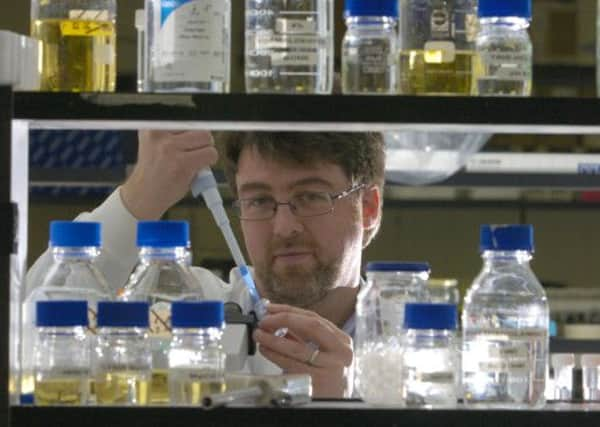Help on the way for knee osteoarthritis sufferers


Osteoarthritis is the most common chronic musculoskeletal disorder and there is currently no cure available. It is worsened by some of the major health issues of our time, including an ageing population, obesity and a sedentary lifestyle.
The reaction from some medical professionals, however, is still that not much can be done about it and that it is simply part of getting older for some people. But only last year, a report from patient-led charity Arthritis Care looked at the consequences and found out that many people had to retire earlier than they would like because of their knee condition.
Advertisement
Hide AdAdvertisement
Hide AdThere were stories of plumbers and electricians and other self-employed people who simply had to give up their job. The condition is also the leading cause of disability allowances, so the social and economic impact is huge.
This is one of the reasons Glasgow Caledonian University (GCU) is co-ordinating a €4.2 million (£3.6m) European research project into knee osteoarthritis – KNEEMO – which begins this month and will run for the next four years. Working with partners from six other universities and three private companies, we will oversee the development of new methods to diagnose, treat or even prevent the disease from developing among those who are particularly at risk. We will also set up a network to share best practice and to train researchers who are working on treating the condition.
KNEEMO will look at how knee osteoarthritis is diagnosed, developing new techniques which will allow doctors and other allied health professionals such as physiotherapists and podiatrists to spot patients who are showing signs of the illness and also those who are at risk of the disease developing.
Knee osteoarthritis is currently treated with pain or anti-inflammatory medication, exercise therapy or the use of braces, with knee replacement surgery as the final option. Research has shown the effectiveness of treatments varies greatly and the project will seek to improve this by more closely matching treatments to the various types of people who live with the condition.
It also unites the most renowned osteoarthritis researchers in Europe. This brings in the expertise needed to make progress in treating the condition. The scale of it is another advantage. We have a large number of organisations carrying out 15 parts of the study, and this lets us look at all aspects of knee osteoarthritis and join them up within the study.
GCU’s own strength is in biomechanics. We have a gait lab on campus, and with osteoarthritis there is a large research focus on biomechanics – basically the forces working on the joint exceeding what the joint can handle.
In a healthy human being, most of the forces go through parts of the knee which are able to handle them, but it is thought that with osteoarthritis too much of the forces are going through parts which can’t handle those forces. So most of our research at GCU is looking at those joints and forces and considering the biomechanical issues.
Other partners bring their own strengths. Aalborg University in Denmark, for example, are experts in computer modelling, and will build a more accurate 3D representation of the knee joint. They will create personalised computer models of patients’ knees for the first time. These will make it easier to understand how various factors, such as the way a patient walks or runs, are linked to the disease.
Advertisement
Hide AdAdvertisement
Hide AdAnother part of the project, run by the University of Southern Denmark in Odense, will develop tools that will help to identify people at a high risk of developing osteoarthritis early, and to prevent them from becoming severely disabled.
My PhD in the 1990s was about osteoarthritis. My professor at that time in Utrecht said to me: “The first thing you need to know is that nobody is interested, but it is a huge problem and someday that will change.”
We can no longer accept that knee osteoarthritis is something that people should be expected to live with – science has moved on. We now have a good idea of what’s going wrong, but if the default attitude is that there is nothing we can do then it will be hard to get our message across. That’s why it’s so important that we have this network, and the research and public attention which goes with it. Together they will change perceptions.
• Martijn Steultjens is professor of musculoskeletal health at GCU. The focus of his research is on degenerative and inflammatory joint diseases and other chronic musculoskeletal pain syndromes www.gcu.ac.uk
SEE ALSO